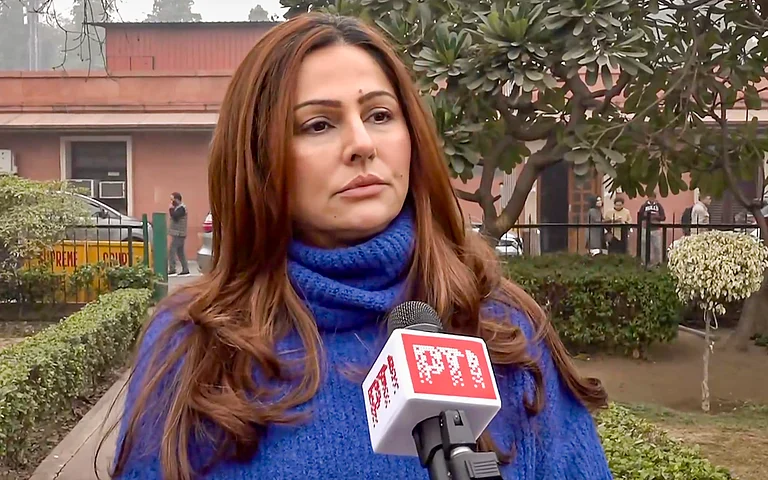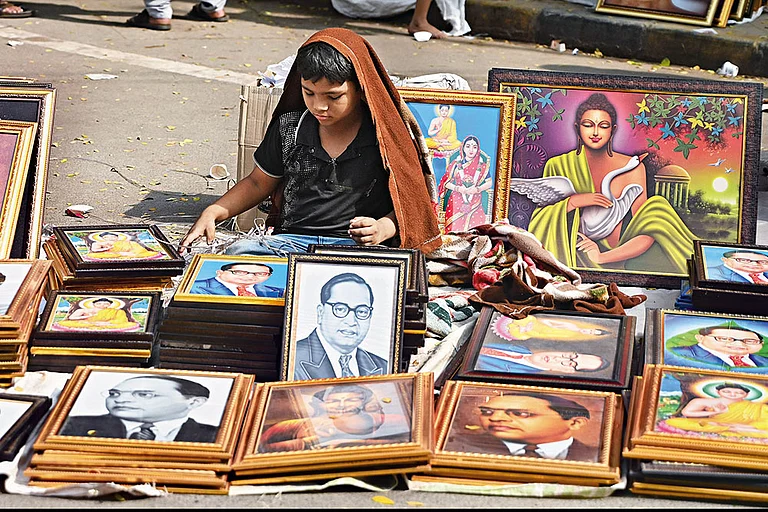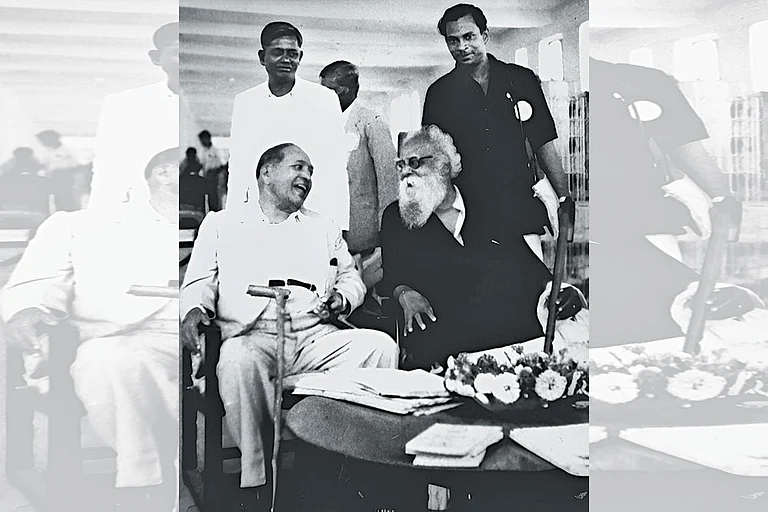A statue on the sprawling campus of the Rajasthan High Court in Jaipur has for long been the reason for protests by Dalit rights activists and outfits.
The 11-feet-tall sculpture of Manu, a figure in Hindu mythology, whose teachings have often been termed as blatantly discriminatory to Dalits, women, and weaker sections of the society by Dalit right activists, has invited the wrath of many social organisations. Some protestors have even gone to the extent of blackening it, resulting in police cases.
Manu is the author of the controversial Manusmṛiti (Laws of Manu), which is believed to be the first ancient legal text and constitution. Dalit rights activists have said repeatedly that the text is known to have formalised regulations around the caste system and the patriarchal values often propagated in Hindu traditions.
The statue of Manu holding the Manusmriti in his hand in the Rajasthan High Court, since its installation in 1989, has seen many protests – even though the statue was never formally inaugurated and the stone slab on which it stands doesn’t have any inscription.
Longest pending PIL in the Rajasthan HC
The statue was installed on February 10, 1989, on the court premises on the request of the then president of the Rajasthan Higher Judicial Officers’ Association Padam Kumar Jain who wrote a letter to the former chief justice N M Kasliwal.
Immediately after it was installed, the Rajasthan High Court issued an administrative order on July 28, 1989, to have it removed. However, the order was stayed by the high court after Vishwa Hindu Parishad leader Acharya Dharmendra and others filed a public interest litigation against it.
In August 1989, while hearing the PIL, the High Court stayed the removal of the statue and ordered that the matter will be heard by a division bench comprising the chief justice of the court.
The PIL is said to be the oldest writ petition pending in the high court and was last heard in 2015 when the proceedings were disrupted due to protests by a group of Brahmin lawyers.
Jaipur-based lawyer A K Jain, who appeared as a lawyer for Dalit groups during the last hearing of the case in 2015, told Outlook, “Around 400 Brahmin lawyers including office-bearers of bar associations came together when I started reading out a portion of Manusmriti that is offensive to Dalits. It was the last time this writ was listed for hearing.”
Satish Kumar of the Centre for Dalit Rights in Jaipur told Outlook, “The ideas of Manu are discriminatory to Dalits, women, and weaker sections of the society. We have been demanding that it should be removed from inside the court premises. This is the irony that the high court that practices equality and constitutional equality has the figure of someone who believes in discrimination.”
Another Dalit rights activist, Tara Chand Verna, told Outlook, “The statue symbolises Dalit oppression, the oppression of women and of Shudras. This statue reminds us of the oppressed past of Dalits and women in India who are still affected by the discriminatory laws written by Manu in his text ‘Manusmriti’.”
Major protests in three decades
The statue has seen major protests in last three decades. During the 1990s and the 2000s, Dalit leaders such as Kanshi Ram and Ramdas Athawale travelled to Jaipur and protested against the statue.
On October 8, 2018, four people travelled from Aurangabad to Rajasthan HC to smear black paint on a statue of Manu on its premises.
The two were booked under sections of the Indian Penal Code for hurting religious sentiments among other charges and were later granted bail on October 22, 2018.
In 2020, Dalit rights activists held a silent protest at the high court to have the statue removed. Last year, around 500 Dalit activists including academics and journalists wrote to Congress leader Sonia Gandhi to look into the matter as Rajasthan is presently a Congress-ruled state.



























